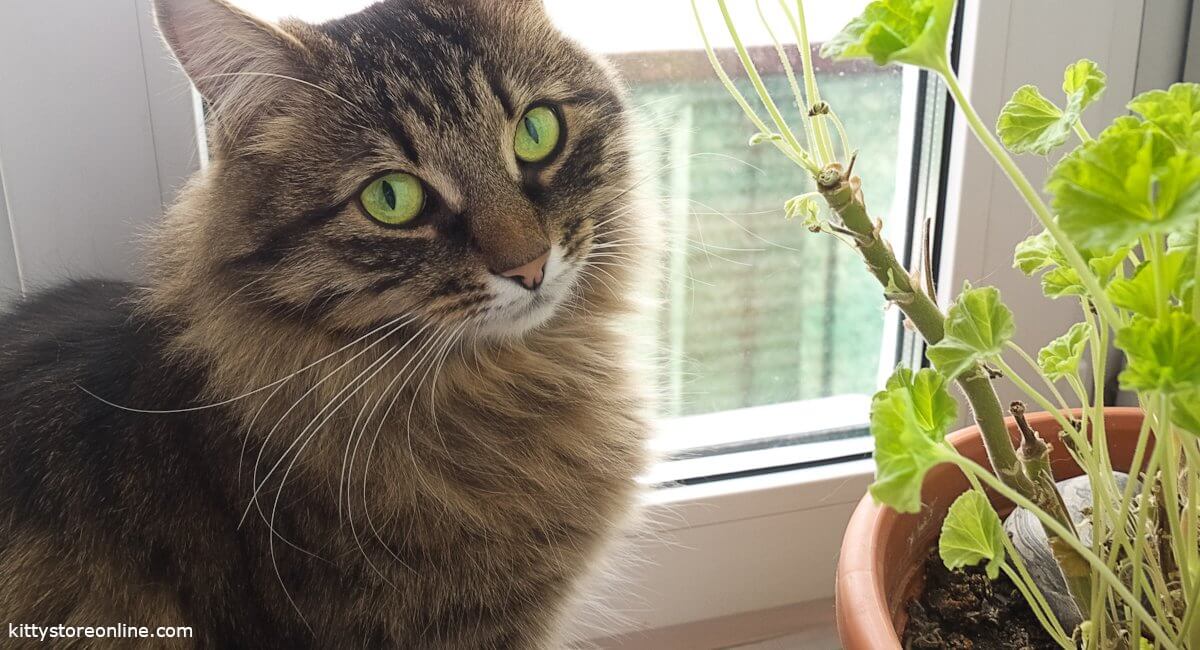If a cat moves in with you, it is not only necessary to purchase suitable equipment for the cat such as cat food, cat toys, a litter box, a sleeping basket and a scratching post. No, you need to make your entire home suitable for cats. This starts with securing open and tilted windows and open doors, and extends to checking houseplants. Because many houseplants that people like are extremely toxic to cats.
Why are cats interested in houseplants?
On the one hand, cats are very curious pets that simply want to try out how the greens taste. On the other hand, apartment cats are often looking for a suitable fiber that will help them regurgitate the hair from the fur in their stomachs. In nature, cats eat grass for this purpose. In the apartment often the green plants on the windowsill must believe in it. Often cats are also bored or they try to compensate for a lack of nutrients by nibbling on the houseplants. The good news is: Not all houseplants are poisonous to cats.
Popular houseplants that are toxic to cats
As with many things, the dose makes the poison. And what one cat can tolerate can already cause symptoms of poisoning in another cat. Known poisonous houseplants for cats are:
- Aloe Vera
- Cyclamen
- Amaryllis
- Anthurium or flamingo flower
- Azaleas
- Calla
- Dieffenbachia
- Monocle
- Ficus Benjamina
- Orchids
- Philodendron
- Sansevieria
- Poinsettia
This list of toxic houseplants for cats is not exhaustive, because even lesser-known houseplants that have not yet been studied can be toxic to cats. Even if particles of tobacco smoke settle on the leaves of houseplants that are actually nontoxic, for example, the plants become toxic to cats. Cyclamen, orchids, and poinsettia should not be in any cat household. They can be deadly to cats. The water in the flower vase can also be toxic to cats. Some poisonous houseplants for cats should not be in your home. For other poisonous plants, it is enough if they are out of reach of the cat. These include the yucca palm, dragon tree and birch fig. Also keep in mind that non-toxic houseplants for cats can become toxic to cats through the use of pesticides, leaf care centers or glitter particles as decorations.
How do I recognize poisoning in my cat?
In addition to vomiting, convulsions and diarrhea, the cat may shake, stagger or salivate. Other signs include a dilated pupil, weak pulse and signs of paralysis. However, circulatory collapse can also occur with severe poisoning. If you notice such signs, be sure to consult a veterinarian, who will inject the cat with an antidote or flush out the stomach. Don’t forget to take the plant the cat chewed on to the vet or take a photo of it. While the effects of some toxic houseplants for cats start immediately there are also plants that take months to show effects.
Stop cats from nibbling on houseplants
Kittens can learn from the beginning, through consistent education, that houseplants are off limits. For cats that are already adults, you can try rubbing diluted perfume or a hot spice mixture on the leaves of houseplants. The cat will desist from, at best, the houseplants. Offer cat grass as an alternative to the cat. Commercially available cat grass is not poisonous and even tastes good to cats.
What houseplants to use with cats?
There would be the money tree, the mountain palm or a kentia palm, which you can place in a cat household without hesitation. The popular green lily, pretty slipper flower, scented nettle (anise hyssop) or Cyprus grass are also not toxic to cats. In addition to cat grass, catnip and cat chamomander are even directly suitable for the cat to nibble.
